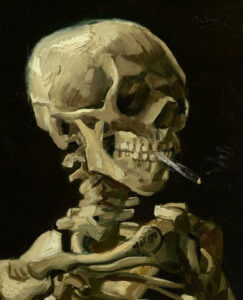
In a musical era often obsessed with immediacy and spectacle, Rich Brian has quietly mastered the art of patience. His creative evolution has never felt rushed, and with the release of “Butterfly” — the second official single from his upcoming studio project Where Is My Head? — Brian deepens the narrative he began weaving with “Little Ray of Light” earlier this spring.
“Butterfly” doesn’t explode onto the scene. It drifts in, almost ghostlike, riding a gentle current of soft percussion, introspective lyrics, and atmospheric production. It’s the kind of track that doesn’t demand attention but earns it — a slow bloom of emotional resonance that continues to unfold long after the first listen.
Accompanied by a music video that mirrors the song’s dreamlike quality, “Butterfly” serves as a crucial emotional node in the Where Is My Head? constellation, reaffirming Rich Brian’s place not just as a rap phenom, but as one of the most introspective, shape-shifting artists of his generation.
The Sound of Subtle Transformation
From the very first bars of “Butterfly,” it’s clear that Rich Brian is not interested in retracing old paths. Instead of leaning into the harder-edged braggadocio of earlier tracks like “History” or “Yellow,” “Butterfly” floats in a softer, more ambiguous emotional register.
Built around a tender, minimalistic beat — pillowy drums, plucked guitar melodies, ambient echoes — the production feels like a quiet room at sunset, saturated in fading golden light. Brian’s delivery mirrors the production’s restraint: his vocals are clean but emotive, avoiding melodrama in favor of something more authentic and lived-in.
Lyrically, “Butterfly” explores the fragile balance between movement and stillness, ambition and surrender. It’s about transformation, yes, but not the kind that happens with fireworks or fanfare. Instead, Brian captures the quiet, often painful metamorphoses that shape us in silence — the ones we barely notice until we realize we are no longer the same.
“I don’t know where I’m headed, but I know it’s somewhere bright,” he confesses, a line that distills the tender uncertainty running through the song’s veins.
This emotional openness feels hard-won. Brian doesn’t offer easy answers or manufactured catharsis. Instead, he invites listeners to sit with their own uncertainties, to embrace the beauty of being unfinished.
A Visual Reflection: The Butterfly Music Video
The accompanying music video for “Butterfly” serves not just as a visual aid, but as a full extension of the song’s atmosphere. Directed with an eye for lyricism and emotional detail, the video unfolds across muted landscapes — empty fields, decaying interiors, shifting skies — all captured with a kind of tender patience.
Rich Brian moves through these spaces alone, a solitary figure caught between worlds. He doesn’t dance, he doesn’t posture; he simply moves, slowly and deliberately, as if feeling out invisible currents under his feet.
Cinematically, the video embraces a loose, almost improvisational structure. Long takes, slow zooms, and natural lighting create an impression of reality slipping between waking and dreaming. Colors are soft, edges are blurred, and the world itself seems caught in a moment of transition — like a cocoon just beginning to break open.
The imagery of flight, implied by the song’s title, is treated with subtlety. There are no literal butterflies; instead, the feeling of weightlessness, of impending metamorphosis, pervades the entire visual narrative. It is a video that trusts mood over plot, feeling over spectacle — a fitting companion for a song so deeply invested in nuance.
The Evolution of Rich Brian: A Story in Three Acts
“Butterfly” arrives at a critical juncture in Rich Brian’s career, representing not just a new single but a new chapter in a story that has been unfolding steadily since his viral breakout with “Dat Stick” in 2016.
The Prodigy Emerges
Rich Brian first captured the world’s attention with an audacious fusion of deadpan humor and startling technical skill. His early work reveled in contradiction: a teenage kid from Jakarta rapping in flawless English, weaving references to American internet culture and trap tropes with a knowing wink. It was clear even then that Brian possessed not just talent, but a deep understanding of cultural play.
The Artist Takes Shape
Albums like Amen (2018) and The Sailor (2019) marked a maturation. Brian began digging deeper into his own experiences — his immigrant story, his struggles with isolation, his creative aspirations. Tracks like “Yellow” hinted at a willingness to confront vulnerability head-on, balancing technical prowess with emotional gravity.
The Transformation Underway
With the release of Brightside (2022) and now the unfolding rollout of Where Is My Head?, Brian appears less interested in proving himself and more interested in exploring himself. The flexes are fewer. The silences are louder. Songs like “Little Ray of Light” and now “Butterfly” suggest an artist not content to simply evolve with the times but committed to evolving with himself.
In this light, “Butterfly” reads not just as a beautiful song, but as a necessary one — a marker of where Rich Brian is headed, even if he doesn’t yet fully know the destination.
88rising and the Expansion of Identity
It’s impossible to discuss Rich Brian’s trajectory without acknowledging the role of 88rising — the media collective that has championed Asian and Asian-American artists in global popular culture.
With Where Is My Head?, and particularly with “Butterfly,” we see Brian continuing to navigate — and expand — the possibilities of identity. He refuses to be tokenized, refuses to be boxed into any easy narrative. He is not here to play ambassador. He is here to be himself — messy, searching, evolving — and in doing so, he does more for cultural representation than any polished press release ever could.
The world Rich Brian inhabits musically is one where borders blur: English and Indonesian; rap and balladry; vulnerability and bravado. In “Butterfly,” that hybridity feels particularly poignant. It’s a song that could have emerged from any corner of the globe, but it carries within it the specific ache of someone constantly moving between worlds, between selves.
Anticipating Where Is My Head?
With Where Is My Head? due out on May 23, “Butterfly” positions itself as a thematic and emotional cornerstone. If “Little Ray of Light” was a cautious step into the open air, “Butterfly” feels like the first tentative movement toward flight.
There is no reason to expect bombast from this new album. If anything, Where Is My Head? seems poised to offer something more daring: a meditation on disorientation, on the bittersweetness of growth, on the quiet revolutions that happen when nobody is watching.
For Rich Brian, the project may not be about arriving at a polished destination, but about documenting the messy, beautiful act of getting there. “Butterfly” reminds us that there is power in not knowing, in embracing the vulnerability of transformation without rushing to control it.
In a culture obsessed with certainty, Where Is My Head? — and “Butterfly” in particular — promises something braver: a record of becoming.
Flow
“Butterfly” is not a single designed to dominate charts or soundtrack gym playlists. It’s a song for late-night drives, for moments of quiet doubt, for those fleeting minutes when you catch your reflection and don’t quite recognize yourself — and feel oddly hopeful because of it.
Rich Brian doesn’t pretend to have found all the answers. In fact, what makes “Butterfly” so moving is its acknowledgment that the questions themselves are beautiful, even sacred.
No comments yet.








